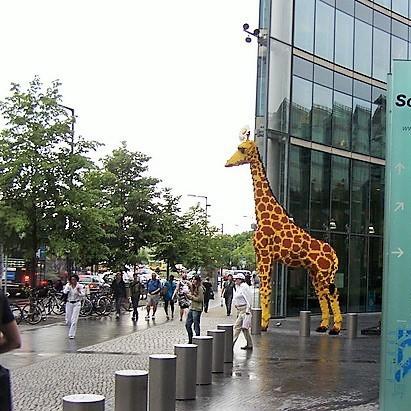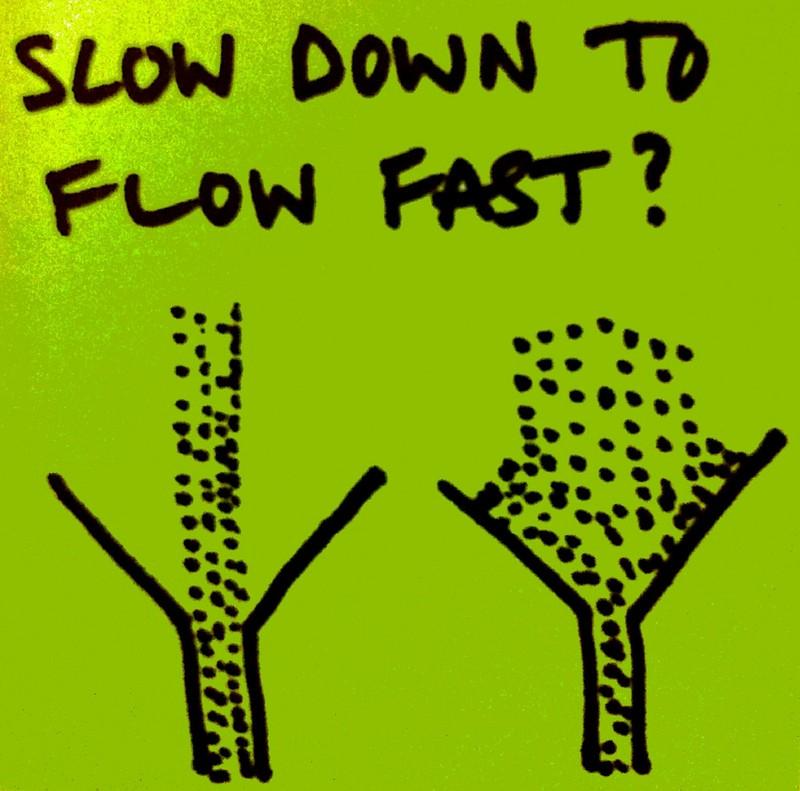6.1.3: Encoding
- Last updated
- Save as PDF
- Page ID
- 92692

- Mehgan Andrade and Neil Walker
- College of the Canyons
Memory encoding allows an item of interest to be converted into a construct that is stored in the brain, which can later be recalled.
Memory encoding allows information to be converted into a construct that is stored in the brain indefinitely. Once it is encoded, it can be recalled from either short- or long-term memory. At a very basic level, memory encoding is like hitting “Save” on a computer file. Once a file is saved, it can be retrieved as long as the hard drive is undamaged. “Recall” refers to retrieving previously encoded information.
The process of encoding begins with perception, which is the identification, organization, and interpretation of any sensory information in order to understand it within the context of a particular environment. Stimuli are perceived by the senses, and related signals travel to the thalamus of the human brain, where they are synthesized into one experience. The hippocampus then analyzes this experience and decides if it is worth committing to long-term memory.
Encoding is achieved using chemicals and electric impulses within the brain. Neural pathways, or connections between neurons (brain cells), are actually formed or strengthened through a process called long-term potentiation, which alters the flow of information within the brain. In other words, as a person experiences novel events or sensations, the brain “rewires” itself in order to store those new experiences in memory.
Encoding refers to the initial experience of perceiving and learning information. Psychologists often study recall by having participants study a list of pictures or words. Encoding in these situations is fairly straightforward. However, “real life” encoding is much more challenging.
When you walk across campus, for example, you encounter countless sights and sounds— friends passing by, people playing Frisbee, music in the air. The physical and mental environments are much too rich for you to encode all the happenings around you or the internal thoughts you have in response to them. So, an important first principle of encoding is that it is selective: we attend to some events in our environment and we ignore others. A second point about encoding is that it is prolific; we are always encoding the events of our lives—attending to the world, trying to understand it. Normally this presents no problem, as our days are filled with routine occurrences, so we don’t need to pay attention to everything. But if something does happen that seems strange—during your daily walk across campus, you see a giraffe—then we pay close attention and try to understand why we are seeing what we are seeing.

Right after your typical walk across campus (one without the appearance of a giraffe), you would be able to remember the events reasonably well if you were asked. You could say whom you bumped into, what song was playing from a radio, and so on. However, suppose someone asked you to recall the same walk a month later. You wouldn’t stand a chance. You would likely be able to recount the basics of a typical walk across campus, but not the precise details of that particular walk. Yet, if you had seen a giraffe during that walk, the event would have been fixed in your mind for a long time, probably for the rest of your life. You would tell your friends about it, and, on later occasions when you saw a giraffe, you might be reminded of the day you saw one on campus. Psychologists have long pinpointed distinctiveness —having an event stand out as quite different from a background of similar events—as a key to remembering events ( Hunt, 2003 ).
In addition, when vivid memories are tinged with strong emotional content, they often seem to leave a permanent mark on us. Public tragedies, such as terrorist attacks, often create vivid memories in those who witnessed them. But even those of us not directly involved in such events may have vivid memories of them, including memories of first hearing about them. For example, many people are able to recall their exact physical location when they first learned about the assassination or accidental death of a national figure. The term flashbulb memory was originally coined by Brown and Kulik ( 1977 ) to describe this sort of vivid memory of finding out an important piece of news. The name refers to how some memories seem to be captured in the mind like a flash photograph; because of the distinctiveness and emotionality of the news, they seem to become permanently etched in the mind with exceptional clarity compared to other memories.
Take a moment and think back on your own life. Is there a particular memory that seems sharper than others? A memory where you can recall unusual details, like the colors of mundane things around you, or the exact positions of surrounding objects? Although people have great confidence in flashbulb memories like these, the truth is, our objective accuracy with them is far from perfect ( Talarico & Rubin, 2003 ). That is, even though people may have great confidence in what they recall, their memories are not as accurate (e.g., what the actual colors were; where objects were truly placed) as they tend to imagine. Nonetheless, all other things being equal, distinctive and emotional events are well-remembered.
Details do not leap perfectly from the world into a person’s mind. We might say that we went to a party and remember it, but what we remember is (at best) what we encoded. As noted above, the process of encoding is selective, and in complex situations, relatively few of many possible details are noticed and encoded. The process of encoding always involves recoding — that is, taking the information from the form it is delivered to us and then converting it in a way that we can make sense of it. For example, you might try to remember the colors of a rainbow by using the acronym ROY G BIV (red, orange, yellow, green, blue, indigo, violet). The process of recoding the colors into a name can help us to remember. However, recoding can also introduce errors—when we accidentally add information during encoding, then remember that new material as if it had been part of the actual experience (as discussed below).

Psychologists have studied many recoding strategies that can be used during study to improve retention. First, research advises that, as we study, we should think of the meaning of the events, and we should try to relate new events to information we already know. This helps us form associations that we can use to retrieve information later. Second, imagining events also makes them more memorable; creating vivid images out of information (even verbal information) can greatly improve later recall. Creating imagery is part of the technique Simon Reinhard uses to remember huge numbers of digits, but we can all use images to encode information more effectively. The basic concept behind good encoding strategies is to form distinctive memories (ones that stand out), and to form links or associations among memories to help later retrieval. Using study strategies such as the ones described here is challenging, but the effort is well worth the benefits of enhanced learning and retention.
We emphasized earlier that encoding is selective: people cannot encode all information they are exposed to. However, recoding can add information that was not even seen or heard during the initial encoding phase. Several of the recoding processes, like forming associations between memories, can happen without our awareness. This is one reason people can sometimes remember events that did not actually happen—because during the process of recoding, details got added. One common way of inducing false memories in the laboratory employs a word-list technique. Participants hear lists of 15 words, like door, glass, pane, shade, ledge, sill, house, open, curtain, frame, view, breeze, sash, screen, and shutter. Later, participants are given a test in which they are shown a list of words and asked to pick out the ones they’d heard earlier. This second list contains some words from the first list (e.g., door, pane, frame ) and some words not from the list (e.g., arm, phone, bottle ). In this example, one of the words on the test is window , which—importantly—does not appear in the first list, but which is related to other words in that list. When subjects were tested, they were reasonably accurate with the studied words ( door , etc.), recognizing them 72% of the time. However, when window was on the test, they falsely recognized it as having been on the list 84% of the time. The same thing happened with many other lists the authors used. This phenomenon is referred to as the DRM (for Deese- Roediger-McDermott) effect. One explanation for such results is that, while students listened to items in the list, the words triggered the students to think about window , even though window was never presented. In this way, people seem to encode events that are not actually part of their experience.
Because humans are creative, we are always going beyond the information we are given: we automatically make associations and infer from them what is happening. But, as with the word association mix-up above, sometimes we make false memories from our inferences— remembering the inferences themselves as if they were actual experiences. To illustrate this, Brewer gave people sentences to remember that were designed to elicit pragmatic inferences . Inferences, in general, refer to instances when something is not explicitly stated, but we are still able to guess the undisclosed intention. For example, if your friend told you that she didn’t want to go out to eat, you may infer that she doesn’t have the money to go out, or that she’s too tired. With pragmatic inferences, there is usually one particular inference you’re likely to make. Consider the statement Brewer gave her participants: “The karate champion hit the cinder block.” After hearing or seeing this sentence, participants who were given a memory test tended to remember the statement as having been, “The karate champion broke the cinder block.” This remembered statement is not necessarily a logical inference (i.e., it is perfectly reasonable that a karate champion could hit a cinder block without breaking it). Nevertheless, the pragmatic conclusion from hearing such a sentence is that the block was likely broken. The participants remembered this inference they made while hearing the sentence in place of the actual words that were in the sentence.
Encoding—the initial registration of information—is essential in the learning and memory process. Unless an event is encoded in some fashion, it will not be successfully remembered later. However, just because an event is encoded (even if it is encoded well), there’s no guarantee that it will be remembered later.

